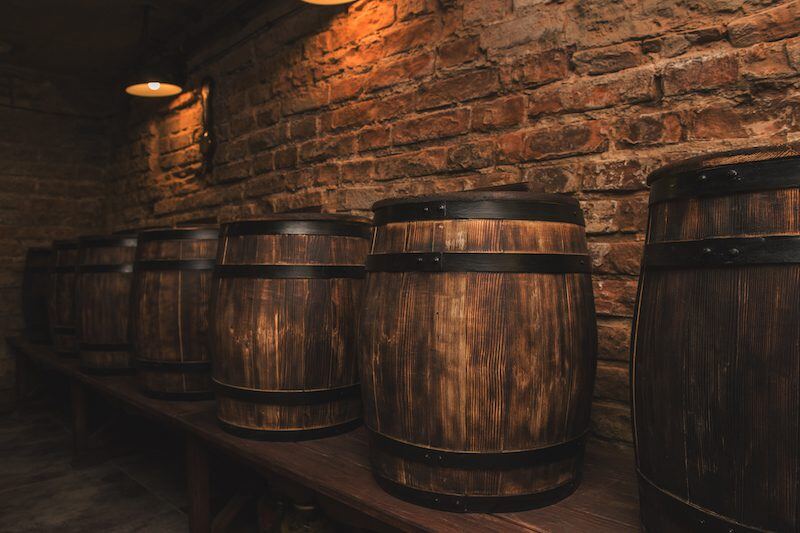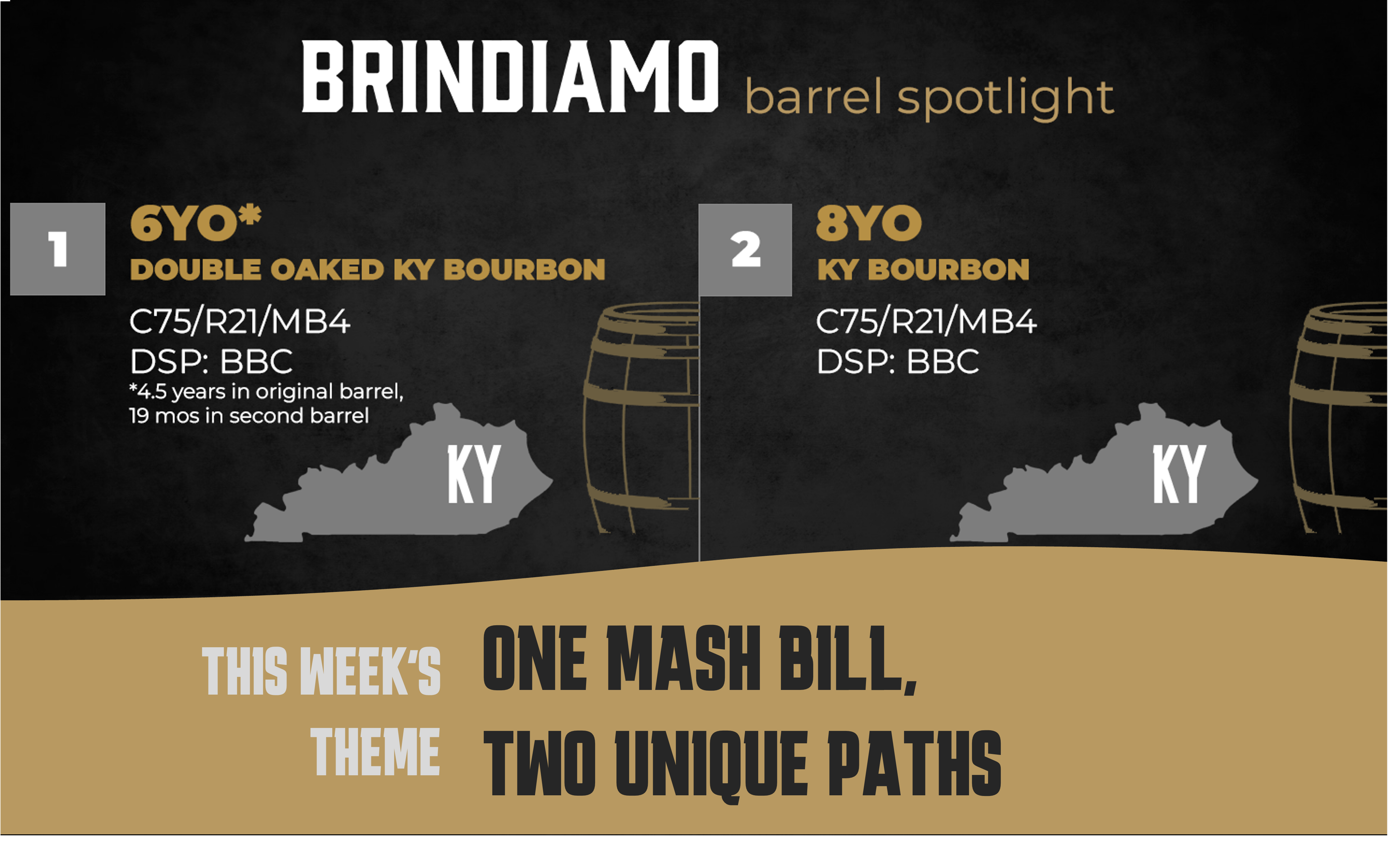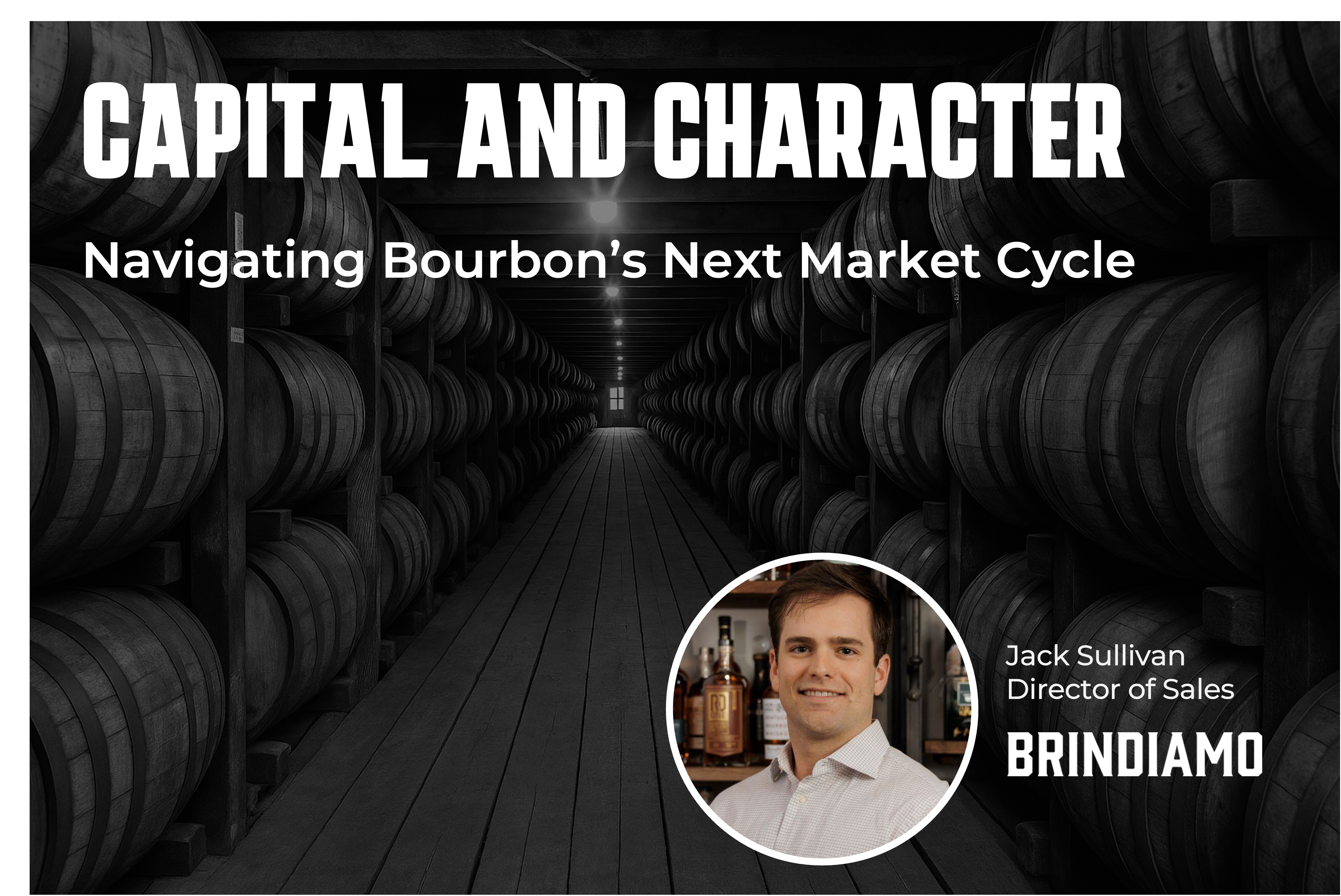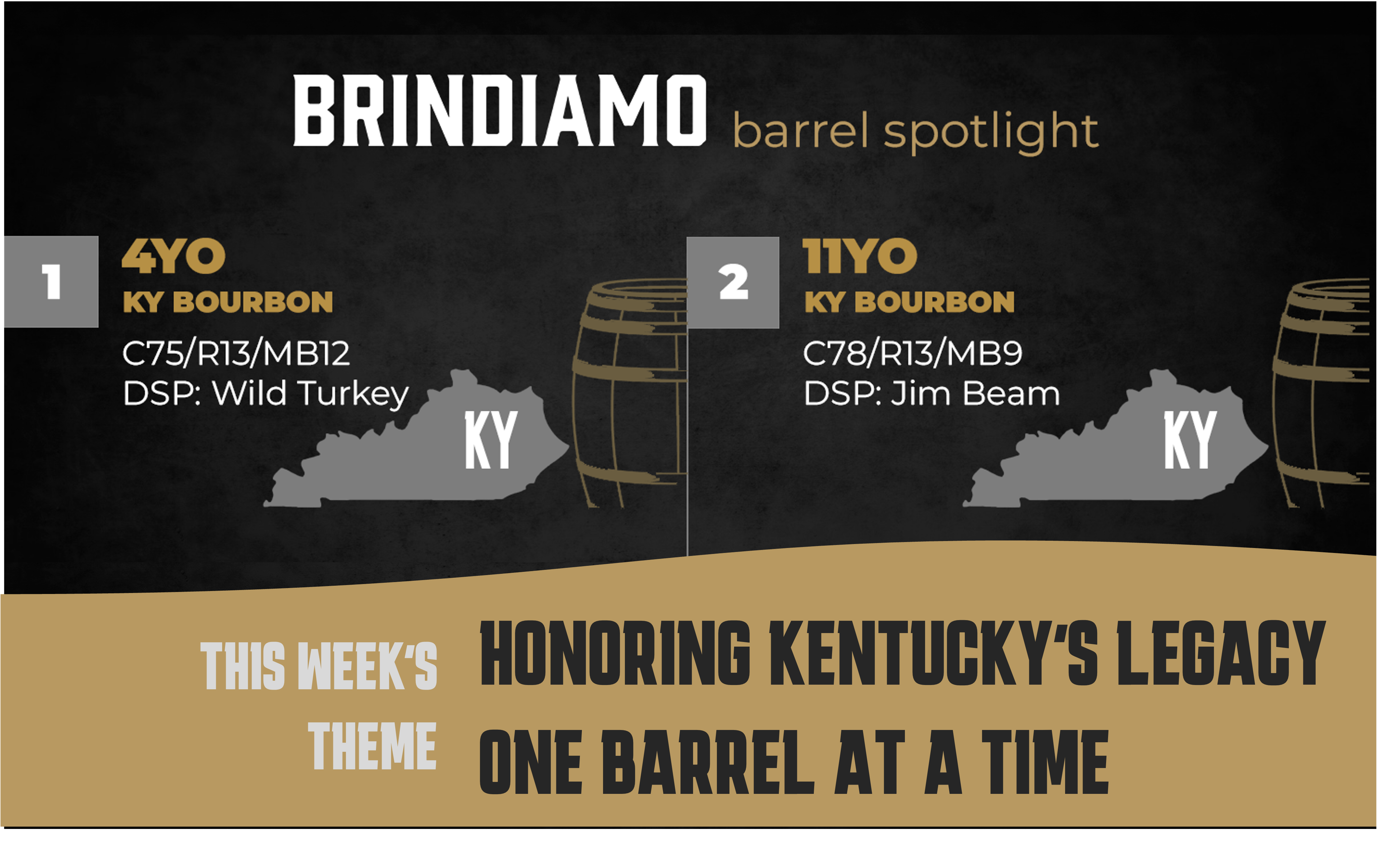Barrel Spotlight: One Mash Bill, Two Unique Paths
Welcome back to the Brindiamo Barrel Spotlight, our weekly email series highlighting the barrels, distilleries, and market dynamics shaping today’s...

Starting a distillery comes with its challenges in the initial years of operation. As the barrels are left to ferment, profitability may not be immediate. This is a common hurdle for many distilleries, so it's essential to devise a business strategy that minimizes risks. Liquid sourcing. Purchasing spirits enables start-ups to accelerate the process of becoming profitable. Numerous companies in the adult beverage industry view this as a cost-effective method to uphold price points and margins.
Spirit production is a natural process that requires patience and time. Whether it's wine, beer, or spirits, fermentation is essential to create the final product. The time needed varies depending on the type of spirit. While some spirits may be ready in just twelve months, others like bourbon or whiskey require a longer aging process. In some cases, it can take up to five years for the distillate to reach its full potential and be ready for sale.
In the initial years, there may be a significant amount of overhead with minimal profits. However, there are strategies available to help distillers generate income. They can opt to use smaller barrels to expedite the process or source their liquid from other producers until their own product is ready for market. Utilizing external sourcing can serve as a stepping stone to enter the industry while their spirits mature. It's essential to weigh the initial investment required to kickstart production before dismissing such opportunities in favor of maintaining brand integrity.
In 2014, the Kentucky Distillers Association estimated there were 5.6 million barrels of bourbon aging in Kentucky with an assessed value of $1.9 billion. This equates to an estimated cost of around $300 per barrel for distillers. A recent article from Distiller Magazine provides a detailed breakdown of the financial responsibilities involved in bringing whiskey to market.
A distillery equipped with a 500-gallon fermenter would require 1,050 pounds of grain for producing whiskey with a mash bill including corn, rye, and malted barley, along with an ABV of 8%. The estimated costs for grain and yeast come in at just under $500 per barrel. And let's not forget about the barrel itself, which ranges in cost from $150 to $250.
Paying yourself or a distiller could cost around $160 per day for an eight-hour workday. If distilleries opt for smaller barrels, they may need to double their efforts. As a rough estimate, budget around $300 per barrel for labor and approximately $100 for utilities.
Time is valuable in the distillery business. When obtaining capital through a loan, it's important to consider the cost of production. For instance, a distillery may have already invested around $1,000 in producing a single barrel. Over a two-year aging period, the interest rate could add up to just over $100.
Let’s continue with our example and suggest that the distillery has invested $1,200 for a two-year-old barrel of whiskey. That barrel could probably produce 300 bottles, but there is a risk. Over the next two years, evaporation will reduce the contents by 14%, meaning the whiskey’s expected value will go down.
Many distilleries kickstart their brand by procuring bulk spirits. This often involves purchasing from multiple suppliers and skillfully blending the liquid to closely align with their desired final product. Some distillers opt to initially source a portion (around 25%-50%) of the distillate externally before gradually transitioning to utilizing their in-house product.
Terry Thome, president of J.B. Thome & Co., once said, “It’s an intelligent way to go, rather than throwing two or three million into something and, in the end, finding out that you don’t have the way to distribute it properly or the right sales approach. The three-tier system is not like selling hardware. You can have the best product in the world, but if you can’t make it stand out, it won’t sell.”
The alcohol industry offers great potential for profitability. If you're looking to establish your own spirits brand in this competitive market, there are various financing options available to support your business venture. Collaborating with professionals like Brindiamo Group can provide you with valuable connections to potential investors interested in backing your brand. We work with different organizations to help them understand the various investment opportunities that are available to get the business off the ground.
If you need liquid sourcing, you’ll also need connections. The logistics surrounding liquid sourcing are challenging. Over the years, we have made valuable connections with trusted partners to deliver comprehensive sourcing solutions.

Welcome back to the Brindiamo Barrel Spotlight, our weekly email series highlighting the barrels, distilleries, and market dynamics shaping today’s...

The market for bourbon barrels is bifurcated. Over the course of the last 24 months, the conversation has shifted from how to find whiskey to how to...

Welcome to the Brindiamo Barrel Spotlight, our weekly series celebrating the barrels, distilleries, and market dynamics shaping today’s whiskey...

Wine and spirits investors want the best return on their investment. The best way to do this is to get your raw materials for the lowest possible...
.png)
Did you know that between 2015 and 2020 liquor store revenue has grown an annualized 2.2% to $61.8 billion? For those looking to start an alcohol...
Join the conversation
Leave a comment below.